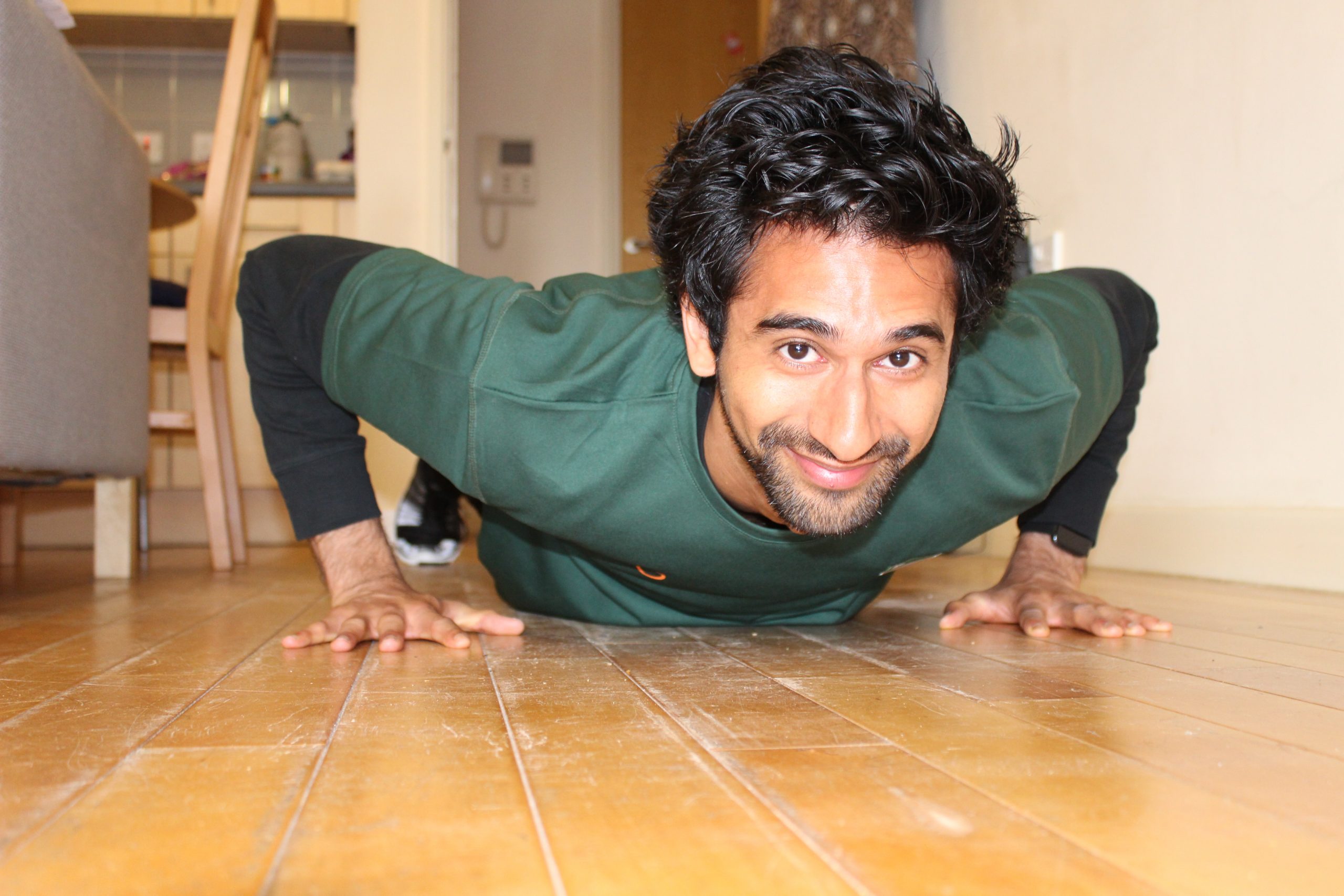
June 25, 2020, by Charlotte Gauja
Training Your Back and Biceps at Home
During the lockdown period, with no gym facilities, it may be challenging to train mid-upper back and bicep muscles. Foundational gym exercises like the bent over row, pulldown and deadlift are ideal for working the posterior chain. But with most are unable to perform these movements due to limited access to equipment right now, does that mean we cannot train our back and biceps at home during lockdown? The short answer, is no. Read more as, Fitness Instructor, Bharat talks through different ways to train your back and biceps at home.
We can incorporate all the muscles involved from our typical pulling exercises into home based workouts, both with and without equipment. Below is a short guide explaining why it’s important to maintain focus on these muscle groups, along with three approaches of how we can develop resistance training at home.
Why Is It important?
Balance. Plain and simple. Avoiding such a large part of the musculoskeletal system can lead to muscle and joint imbalances, which can negatively affect posture and range of movement. Pushing-dominant exercises like press-ups, planks, shoulder taps etc… are fantastic. But, along with our ever-increasing habits of looking frontward and down at screens and slumping forward into seated and laying positions, this anterior (frontside of the body) emphasis can result in:
- overworked medial and frontal deltoids (shoulders)
- shortened pectoral muscles
- overstretched back and neck muscles
Over time, this can lead to rounding of the upper spine. Bringing in posterior-focused exercises can help counteract this issue and provides us with more natural, healthy posture and overall physical potential.
Specifically to training goals, combining a mix of push and pull movements into any resistance training routine will help lead to the desired outcome. That’s the case whether your aim is getting stronger, increasing muscle mass, endurance or becoming more explosive in your movement.
It should be noted that many of our lower body and even pushing exercises can activate areas of the backside of the body. Scapular retraction and lower back stabilisers are involved in a lot of these movements, if performed correctly. The musculoskeletal system is one interconnected chain, with movement in one area affecting a range of others. Performing dedicated exercises to work the back and biceps will unveil the full benefits of whole-body movement training, and contribute more greatly to our overall health and wellbeing.
No Equipment? No Problem.
Having absolutely no equipment to utilise shouldn’t be a barrier to training our backs and biceps. Below are five exercises you can try which will target a range of desired muscles in our discussed areas:
- Reverse Planks
- Walkouts
- Biceps Press-ups
- Bird-dogs
- Prone Y-T-W Raises
Note that these bodyweight moves are not actually pulling exercises as we are not using anything to pull against.
Getting Creative at Home
Instead of working with solely bodyweight, we can start to get creative at home and bring in additional home-made resistance and incorporate pulling movements in our environments. Look around your home and surrounding area. What objects and structures could you hold on to and either pull towards you or pull yourself towards? If you’re thinking about deadlifting a car, please stop, I was thinking more along the lines of:
- Holding onto food tins or books to perform some of the above bodyweight moves
- Using tins for reverse flyes or renegade rows
- Filling a bag or suitcase with books or tins to perform bent over rows by pulling the handle
- Holding onto a stable table or two strong chairs to pull yourself up via inverted rows
- Vertical hangs or pulls on secure bars or frames
- Climbing/bouldering in natural environments
Please make sure that if you start getting creative with home-made resistance or using existing structures to pull your own bodyweight, that it is safe, secure and appropriate for you.
It is currently unclear in some public parks if outdoor gyms can be utilised or not. If you choose to use outdoor frames for exercises like inverted rows or pull-ups/chin-ups, do just ensure the space is safe, sanitise yourself and any equipment touched to help limit the spread of infection.
Should I Invest in Exercise Equipment?
Though the above methods we have discussed offer a free and creative way to train your back and biceps at home, they are not without limitations in terms of accessibility to all fitness levels. For those unable to create your desired resistance using the above methods, below is a list of equipment that can add more resistance which you could invest in:
- Resistance Bands
- Ropes
- Gymnastics Rings
- Suspension Trainer
- Pull-up Bar
- Free Weights
- Resistance Machines
- Calisthenics Frame
Everything above hasn’t been about encouraging you to select the approach to training back and biceps at home which I think is best. It has been to encourage you to incorporate some form of posterior chain movements and tools into your lockdown locomotion, using the methods that is appropriate and accessible for you.
Having a balanced musculoskeletal system as well as exercise variety has a plethora of benefits for our overall health and fitness. Employing one or more of these approaches into your resistance training schedule can help these benefits to fully flourish and diversify your training further at home.
Check out UoNSport’s Health and Wellbeing Home to explore our inclusive offer of health and fitness to try whilst you are in lockdown.
No comments yet, fill out a comment to be the first

Leave a Reply